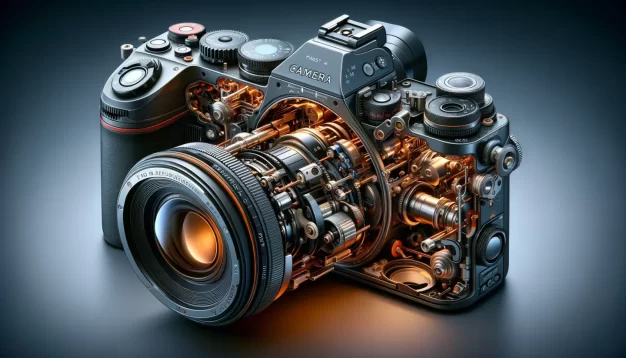
Introduction to Camera Anatomy
Understanding the intricate components of a camera is essential for both budding photographers and seasoned professionals. Mastery of these elements allows for greater control and creativity in capturing the world through the lens.
Camera Body
The Core of Photography
The camera body is the vessel that houses the photographic heart. It’s the base upon which lenses are mounted and the scaffold that supports various control buttons and dials. Bodies range from minimalist designs in point-and-shoot cameras to the complex ergonomics found in DSLRs and mirrorless systems.
Lenses
The Eye of the Camera
The lens is the first point of contact for light entering the camera. Its quality and characteristics, such as focal length and sharpness, are pivotal to the image’s outcome. Prime lenses boast a fixed focal length, offering superior sharpness, while zoom lenses provide versatility. A fast lens with a large maximum aperture is invaluable in low light.
Sensor
Capturing the Light
In the digital world, the sensor has replaced film as the light-sensitive surface that records the image. Its size is a factor of utmost importance, with full-frame sensors offering superior performance in dynamic range and low-light situations compared to their smaller counterparts like APS-C or micro four-thirds.
Shutter
Controlling Exposure
The shutter is the gatekeeper of light, determining the duration that the sensor is exposed. A fast shutter freezes action, while a slow shutter can create motion blur, adding a sense of movement to the image. Mastery of shutter speed is crucial for manipulating the visual narrative of a photograph.
Aperture
The Pupil of the Lens
Often referred to as the iris of the camera, the aperture controls the amount of light that passes through the lens. It’s denoted by f-numbers; a smaller number means a larger opening. Aperture affects depth of field, with wider apertures yielding a shallower focus plane, perfect for isolating subjects from their background.
ISO Settings
Sensitivity to Light
The ISO setting is the camera’s sensitivity to light. A low ISO value is used in bright conditions to maintain image fidelity, while a higher ISO is necessary in darker settings. However, pushing the ISO too high can introduce noise, akin to the grain in film photography, which can be both an artistic choice or a nuisance.
Conclusion
Mastering the Basics
Grasping the fundamentals of camera anatomy is a powerful step toward crafting expressive and impactful photography. While gear does not make the photographer, understanding the tools at one’s disposal can certainly break the limits of creativity, allowing for a translation of vision into imagery with precision and intent.